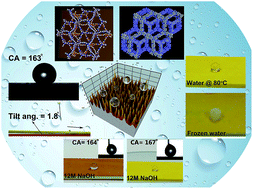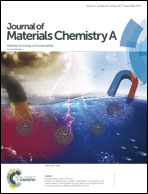Super-hydrophobic covalent organic frameworks for chemical resistant coatings and hydrophobic paper and textile composites†
Abstract
Covalent organic frameworks are crystalline polymers with modular tunability and ordered pores. If made super-hydrophobic, owing to their flexibility, texture and organic nature, they can be of use in several applications that demand hydrophobic surfaces. Super-hydrophobic surfaces have been developed by introducing micro/nano-asperities on metal surfaces by laser-etching or by nano-structuring their morphologies. Many industrial applications demand super-hydrophobicity under chemically harsh environments, something which such metal-based metastable surfaces cannot guarantee. Evidently, the most abundant are metal-free fluorine based polymer surfaces, but considering long-term environmental benefits developing fluorine-free alternatives is important. Here, porous super-hydrophobic COFs with 2D and pseudo-3D frameworks have been utilized to make coatings with exceptional water-repelling characteristics assisted by their Cassie–Baxter state (contact angle = 163 ± 2°; tilt-angle = 2°, hysteresis = 4°). Importantly, the coatings maintain their super-hydrophobicity even under harsh acidic/basic conditions (pH = 1–14) and towards ice and hot water (80 °C), something where even a lotus leaf fails. Also, their organic nature and fibrous texture enable their facile compositing with paper and textiles. At a mere <5% loading, the COFs seem to pack very well within the cellulose strands of these materials providing a markedly hydrophobic coating to these otherwise completely hydrophilic materials.



 Please wait while we load your content...
Please wait while we load your content...